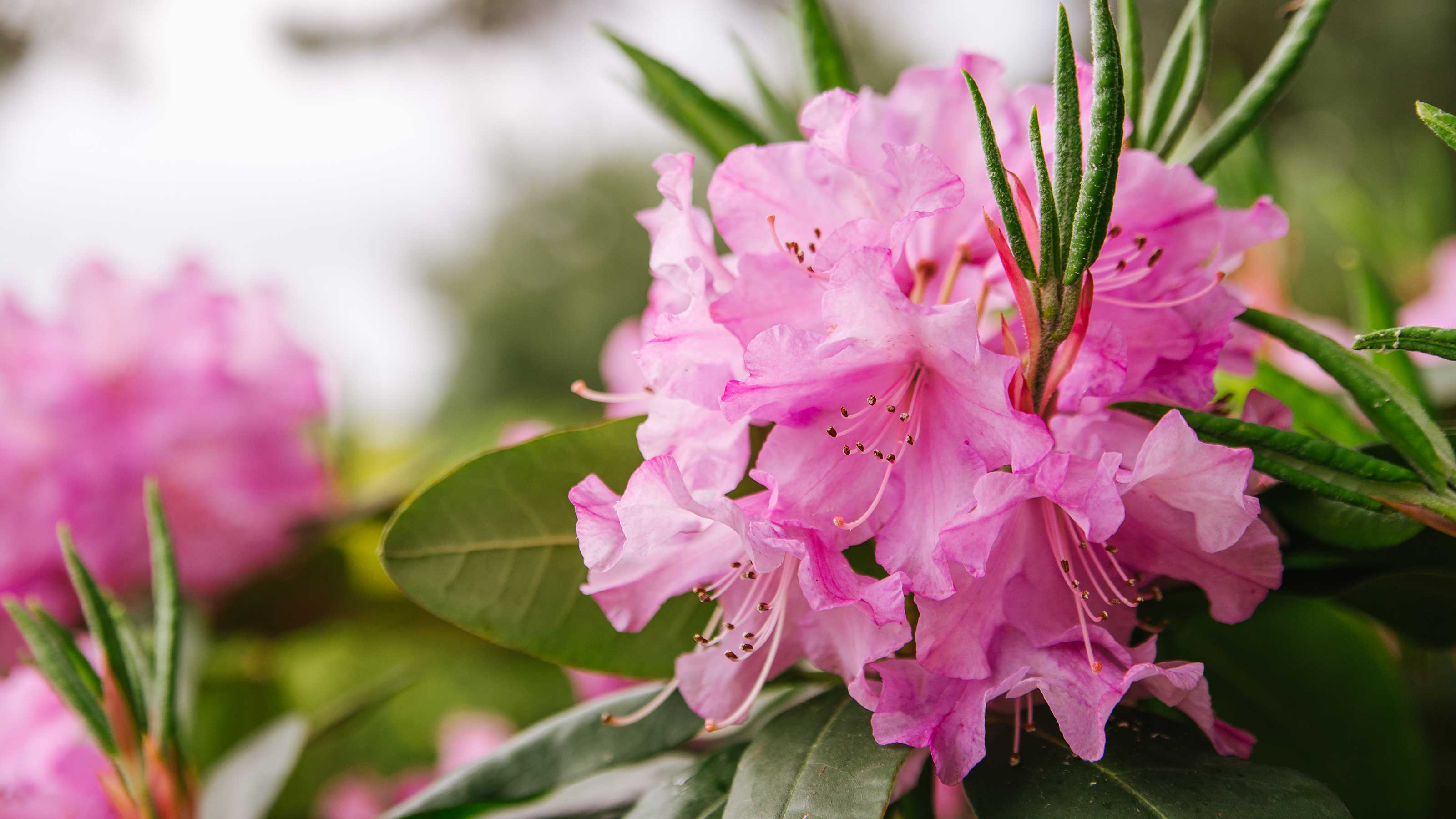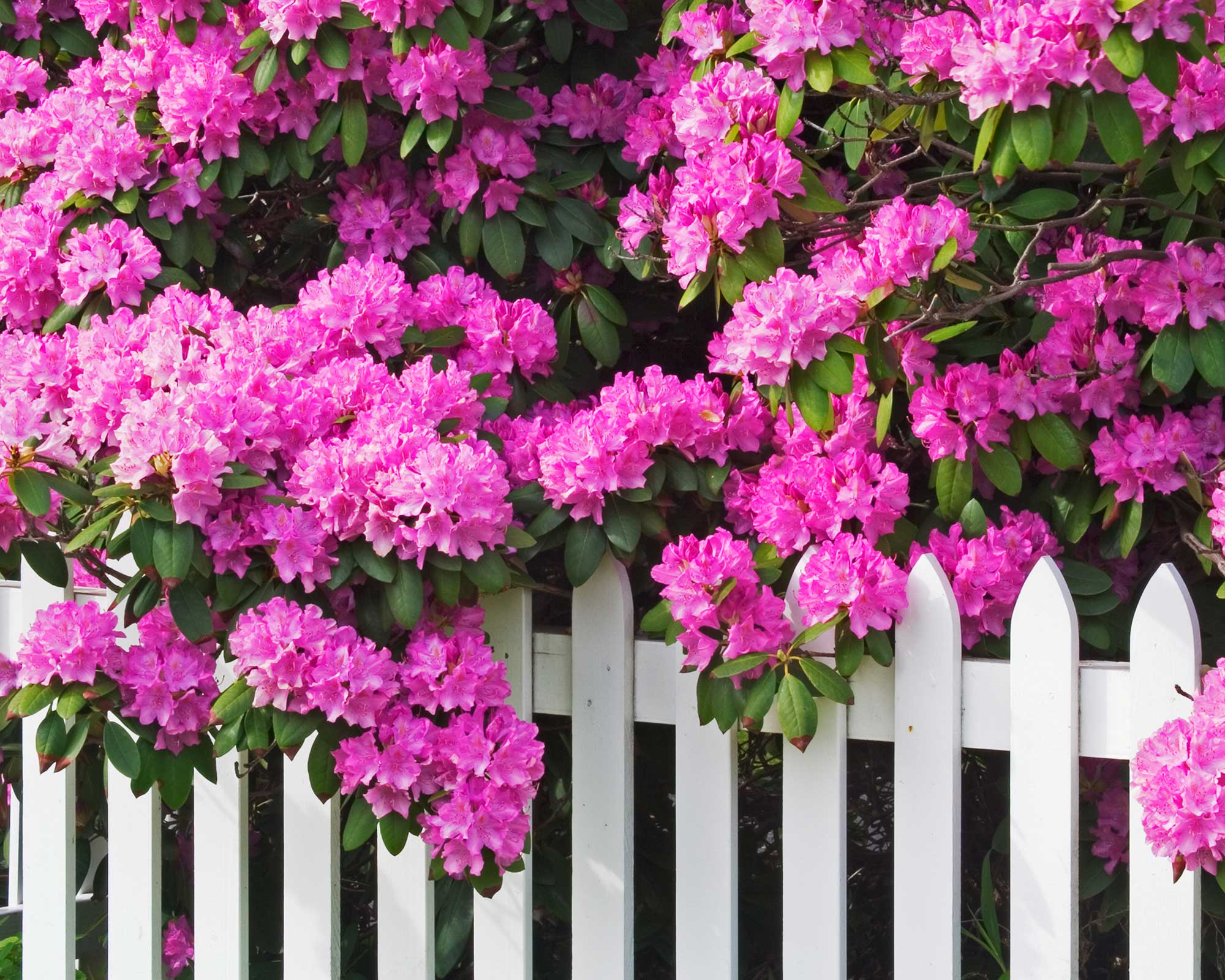Pruning rhododendrons: get it right with these tips
Pruning rhododendrons isn't difficult once you know how – and will reward you with healthier, better-looking shrubs


Pruning rhododendrons isn't one of those outdoor tasks you have to do every year – in fact, some rhododendrons will do just fine left to their own devices.
However, as is often the case when pruning shrubs, a trim now and again can help neaten them up and encourage bushier, healthier growth. So, if you have one of these spring-flowering, evergreen beauties in your backyard and are wondering how and when to introduce it to your secateurs or hand saw, this guide will come in useful.

Rhododendrons are valuable garden additions for their dazzling spring flowers
Is pruning rhododendrons necessary?
No, in most cases, pruning rhododendrons is not strictly crucial for keeping them healthy. But, it can have its benefits.
Similarly to pruning camellias, all that generally needs doing is the removal of spent flowers and any unsightly limbs, says the RHS. Sometimes, pruning is also done to improve the shape of the shrub, or to renovate a plant that's old and looking a little lackluster.
You may also wish to cut it back if it's grown too large for its space. However, it's good practice to check how large different varieties will eventually grow before you select one for your garden. For instance, 'a tall-growing variety just isn't suitable in front of a picture window,' says The American Rhododendron Society. 'No amount of pruning will make it fit there comfortably and attractively.'

Some rhododendrons will naturally grow larger than others
When is the best time for pruning rhododendrons?
'The best time to prune a rhododendron is immediately after it has finished flowering,' says John Negus, a gardening expert from Amateur Gardening. This tends to be in late spring.

A garden journalist for over 50 years, John regularly answers readers' questions in Amateur Gardening magazine, including many on shrubs, such as rhododendrons. He has also written four books and has delivered many talks on horticulture.
Pruning rhododendrons in 4 simple steps:
Want to give your shrub a tidy-up? It's easier than you might think, just follow these steps:
- If your rhododendron needs a bit of re-shaping, start by cutting back ill-placed stems to create a more pleasing rounded shape, says John. Cut to just above a cluster of leaves or a bud, at a slant. Anvil pruners, such as these Wolf-Garten ones from Amazon, are a better choice for this than bypass ones as they are good for cutting through woody stems. Ensure they are sharp and clean first. For larger shrubs with thicker stems, you may need to use a pair of loppers or a hand saw.
- Remove dead or dying shoots in the center of the bush, again cutting back to a healthy set of leaves or a bud.
- Then, carefully deadhead your rhododendron, taking care not to damage new shoots growing close to the flowers. This will improve the appearance and also will encourage the plant to channel its energy into new growth, rather than into setting seed.
- If the soil is dry, water it liberally before feeding it with an ericaceous granular fertilizer. Finish by mulching around the base with compost or manure (avoid allowing the mulch to touch the stem, which can cause rot).

Deadheading a rhododendron will improve its appearance
How to renovate rhododendrons
If your evergreen shrub is looking a little bare and straggly – whether growing in a container or in the ground – it is possible to renovate it by giving it a harder prune. But, it's important to do so cautiously. As John says, it's best to carry out the project over three or more years, and not to take too much off in one go. In fact, as a general rule for most shrubs and trees, you should avoid removing over a third at a time.
'Prune out one-quarter of the branches after flowering,' John says. 'Choose the worst-looking parts – you might not have to take them off at the base, maybe higher up – and just take your time so that the plant has a pleasing shape.
'Do this each year and you will see your rhododendron transformed.'
Some varieties will respond well to harder cutting back. These are generally the rough-barked rhododendrons, (Rhododendron ponticum, for instance), explains the RHS. But if you're uncertain on how your shrub will react to a hard prune, take it slow.

The garden was always a big part of Holly's life growing up, as was the surrounding New Forest where she lived. Her appreciation for the great outdoors has only grown since then. She's been an allotment keeper, a professional gardener, and a botanical illustrator – plants are her passion.
